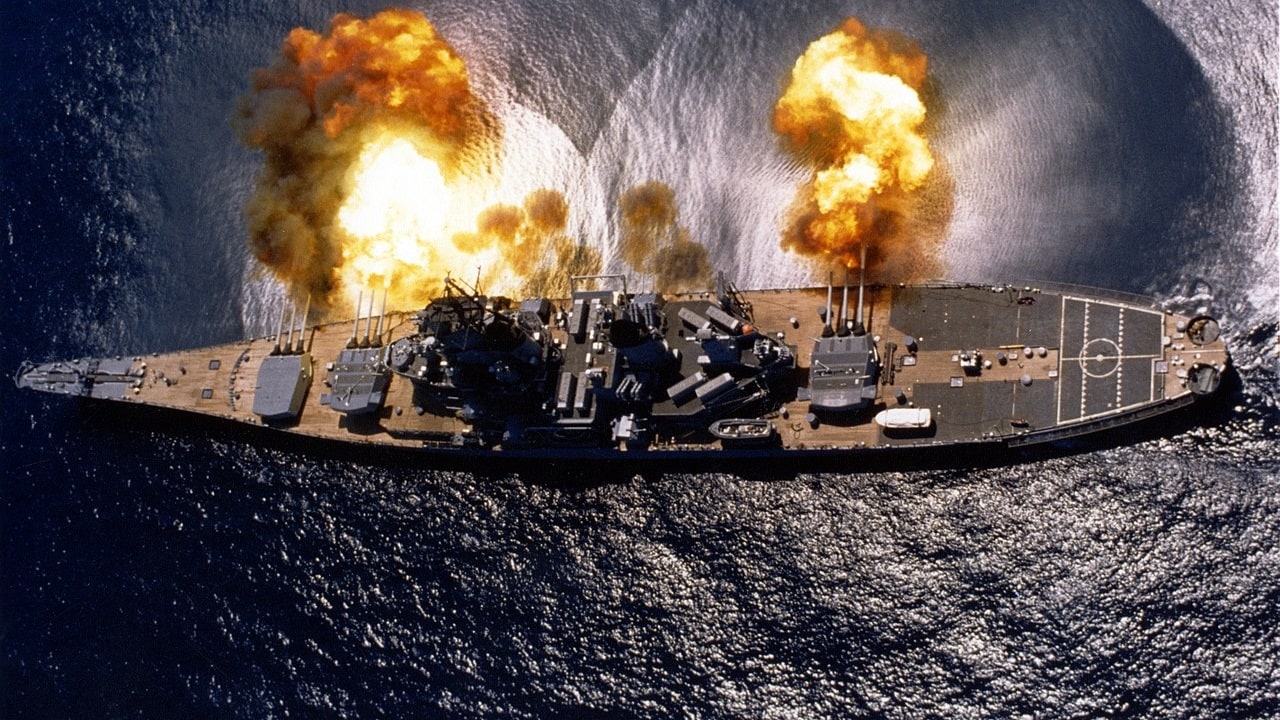Summary: The revival of the Iowa-class battleships during the 1980s, renowned for their substantial firepower and nuclear-armed Tomahawk missiles, underscored the U.S. Navy’s strategic pivot towards heavy maritime power. This move, fueled by the battleships’ capability to deliver long-range strikes and provide surface bombardment, was a response to the evolving global security landscape. Despite concerns about their vulnerability to attacks, the Navy’s formation of Surface Action Groups, akin to today’s Carrier Strike Groups, offered a layer of protection, enabling these behemoths to project power effectively. The Gulf War in 1991 saw the operational prowess of these battleships, reaffirming their value in modern warfare. Today, with advancements in ship-defense technology, long-range sensing, cross-domain networking, and drones, the concept of re-integrating heavy battleships into the fleet, especially in the Pacific’s vast expanses, suggests a strategic advantage in concentrated, long-range, and heavily protected maritime firepower. This approach could redefine naval warfare, providing a formidable presence in regions with limited land-basing opportunities.
Iowa-Class Battleships: Bridging Past Prowess with Future Warfare
The U.S. Navy’s famed World War II-era Iowa-class battleship could carry nuclear-armed Tomahawk missiles capable of attacking at ranges up to 1,700 miles. They also armed attack Tomahawks able to travel 850 miles, and even ship-to-ship maritime Tomahawks.
The sheer firepower of the Iowa class, which also fired armor-piercing shells, dual-purpose 5-inch guns for surface bombardment up to 10 miles offshore, and Harpoon anti-ship missiles, is probably why the Navy brought the ships back into service in the 1980s.
Two Iowa-class battleships attacked Iraq with missiles and 16-inch guns during the Gulf War in 1991.
An article in the June 1982 issue of Popular Mechanics detailed the battleship’s firepower and explained the rationale for their return, which lasted into the early 1990s.
Critics of the move worried at the time that the large battleships were vulnerable, easy targets for Russia — concerns that would be even more relevant today.
To protect against that vulnerability, the Navy arranged something quite similar to today’s Carrier Strike Groups. Warships such as cruisers and destroyers would surround and protect the larger battleship at the center of what the Navy called a Surface Action Group in the 1980s
The concept is still relevant today and makes great sense in retrospect. The return of heavy maritime firepower brought a big advantage to the theater, while the vessel received measurable protection from surrounding warships. Large battleships were more visible targets, but that is the case with carriers today as well. It seems conceivable that some of the thinking in the 1980s regarding the Iowa class contained some of these ideas.
The risk of deploying large and more easily detected and attacked warships can be greatly offset by cutting-edge ship-defense technology, long-range sensing and threat detection, and cross-domain networking.
Drones operating as aerial gateways can transmit data beyond a surface ship’s radar horizon.
Course correcting, long-range missiles and a new generation of layered ship-defense technologies certainly raise the possibility that it might someday make sense again to bring back the heavy firepower of classic battleships.
Such an idea would be particularly relevant in areas such as the Pacific, where there are not many land-basing opportunities for heavy firepower across the region’s vast expanse.
For this reason, concentrated, long-range, heavily protected large warships could offer unique and much-needed maritime warfare advantages.
Kris Osborn is the Military Affairs Editor of 19FortyFive and President of Warrior Maven – Center for Military Modernization. Osborn previously served at the Pentagon as a Highly Qualified Expert with the Office of the Assistant Secretary of the Army—Acquisition, Logistics & Technology. Osborn has also worked as an anchor and on-air military specialist at national TV networks. He has appeared as a guest military expert on Fox News, MSNBC, The Military Channel, and The History Channel. He also has a Masters Degree in Comparative Literature from Columbia University.
From 19FortyFive
A Russian Submarine Accidently ‘Destroyed Itself’
Total Massacre’: Ukraine Footage Shows Russian Cruise Missile Shipment Attacked

